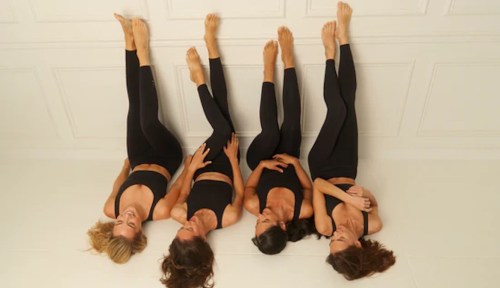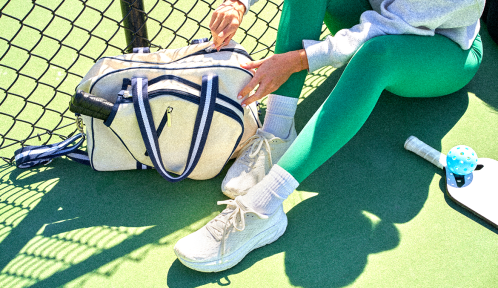You’ve had your downward dog and warrior poses mastered for years, but when you put yourself into trickier situations that require some serious balancing skills, it only takes a second to fall out. So what gives? Well, according to a podiatrist, you might be able to blame your yoga mat.
In a recent episode of the Urban Wellness Clinic’s Muscle Medicine podcast, Emily Splichal, DPM, reveals the prime yoga accessory could actually be why balancing is so hard. “When you go onto a yoga mat, you’re dampening or blocking the small nerves in the bottom of the feet,” she says.
Run Smarter, Not Harder: Nike’s Running Shoe Finder Takes the Guesswork Out of Choosing Sneakers

Flares! Wide-Legs! Cargos! Here Are 5 Nike Pairs to Help You Celebrate the Active-Pants Renaissance

These Leggings Give You a Lymphatic Drainage Massage While You Walk—Here’s What Happened When I Tried Them

And those nerves are crucial for mastering one-legged poses: They have quicker reaction times, making them better at sensing tiny movement changes to help keep you balanced. Unfortunately, due to the texture and thickness of mats, those nerves are often suppressed, forcing you to rely on the large nerves on the outside of the ankle that don’t do nearly as good of a job at keeping you stable.
“When you go onto a yoga mat, you’re dampening or blocking the small nerves in the bottom of the feet.” —Emily Splichal, podiatrist
Since all soft surfaces in general are culprits—and there’s no way you’re doing yoga on a hardwood floor—there’s really no quick fix besides Dr. Splichal’s go-to mat: the Naboso ($110), a proprioceptive mat that’s specifically designed to stimulate the nerves in the bottom of the feet for better control and stability during exercise. “There are tiny little pyramids across the entire mat with very specific heights and distances between them. Research shows when you have a pyramid instead of something circular, square, or flat, it creates a response within the nervous system,” she explains.
Basically, it works like braille—except with your feet. “It’s the same receptor in the hands and the fingers that reads braille as the receptor in the feet that reads the Naboso mat.” While you’ll get a great yoga sesh on any mat you use, an upgrade might be in order to finally master your standing split, once and for all.
Peloton Yoga is here, which means you can finally practice crow pose in peace. Or, find out how to get a yoga glow without ever hopping on a mat.
Sign up for the Well+Good SHOP Newsletter
Get exclusive deals on wellness, beauty, fitness, and food products that have been hand-picked by our editors.
Got it, you've been added to our email list.








